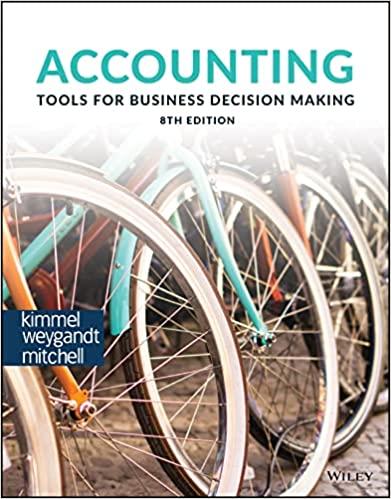Please im stuck with these problems!
Florentino Allers is the production manager of Electronics Manufacturer. Due to limited capacity, the company can only produce one of two possible products: . An industrial motherboard with a 75% probability of making a profit of $1 million and a 25% probability of making a profit of $120,000. . A regular motherboard with a 100% chance of making a profit of $660,000. Florentino will get a 20% bonus from his department. Florentino has the responsibility to choose between the two products and is more of a risk-taker, more so than most of the top management at Electronics Manufacturer. A. Which option is Florentino more likely to choose and why? Florentino will choose the industrial motherboard since he is a risk-taker, and a 75% chance of a $1 million profit is much higher than v the $ 660,000 v (even though there is a 25% chance of a $120,000 profit with the industrial motherboard). B. Which option would the company be more likely to choose and why? The company, being a lower risk v taker than Florentino, would prefer the regular motherboard because of the certainty of earning $ 660,000 V . While the expected value of the industrial motherboard is $ 1,000,00 X higher v , the potential difference of $ 340,000 X is not enough v to offset the higher risk v (25% chance) of only earning $120,000. C. What changes should the company make to Florentino's compensation to avoid unnecessary risks? The company should reduce v the size of the bonus and increase v the salary, thus leveling the playing field when it comes to risk-taking. Feedback Check My Work A. For a risk taker, what profit level is more attractive? Think of risk taken and the associated potential for the reward for doing so. B. Consider options that are certain versus others that have risks with no guarantee of desired results. How much of a difference would there need to be between the two choices to play a role in this decision? C. Consider the incentives in place to influence risk taking. What changes could be made to minimize this incentive and subsequently the desire to take risks?Macon Mills is a division of Bolin Products, Inc. During the most recent year, Macon had a net income of $43 million. Included in the income was interest expense of $3,100,000. The company's tax rate was 40%. Total assets were $468 million, ? current liabilities were $106,000,000, and $75,000,000 of the current liabilities are noninterest bearing. What are the invested capital and ROI for Macon? Enter your answer in whole dollar. Round "ROI" answer to two decimal places. Invested Capital $ 393,000,000 ROI 12 X % Feedback Check My Work Invested capital is determined using total assets and non-interest bearing current liability amounts. ROI uses net income, interest expense after subtracting the portion related to tax savings, and uses the invested capital figure in the necessary calculation. Refer to the text for the formula to be used implementing the components mentioned above.Jefferson Memorial Hospital is an investment center as a division of Hospitals United. During the past year, Jefferson reported an after-tax income of $7 million. Total interest expense was $3,100,000, and the hospital tax rate was 30%. Total assets ? totaled $69.9 million, and non-interest-bearing current liabilities were $23,300,000. The required rate of return established by Jefferson is equal to 17% of invested capital. What is the residual income of Jefferson Memorial Hospital? Enter your answer in whole dollar. $ 5,811,700 X Feedback Check My Work Invested capital is determined using total assets and non-interest-bearing current liability amounts. Net operating income after taxes must then be determined which uses net income, interest expense after subtracting the portion related to tax savings. Residual income uses net operating income after tax, the cost of capital percentage, and invested capital in its calculations. Refer to the text for the formulas to be used implementing the components mentioned above.Media Company provides education and training services and operates three divisions Print, Industrial and EServices. Division managers are evaluated based on the division's return on investment, and historically, the EServices division has consistently outperformed the other two divisions. Media's senior management team has recently discovered that the EServices Division manager has chosen not to invest in proiects that would have been benecial to the organization as a whoie, and they are concerned that the current practice of evaluation the division managers' performance using return on investment may have contributed to these decisions. Therefore, the senior management team is considering the use of residual income or EVA to evaluate the division managers' performance. The following data is taken from the most recent year of operations. _ $30,000,000 $20,000,000 53.000300 Current liabilities 750,000 325,000 Operating Income 4,200,000 3,400,000 1,520,000 _IEI_IEI Weighted Average Cost of Capital _ Required: 1. Calculate the return on investment, residual income, and EVA for each division. 2. Comment on the expected results of switching performance evaluation method to either residual income or EVA. More specically, is one better than the other and why? Should the switch be made? Why or why not? (Hint: think about how similar and different the divisions are in areas such as size, what they do, etc.)










